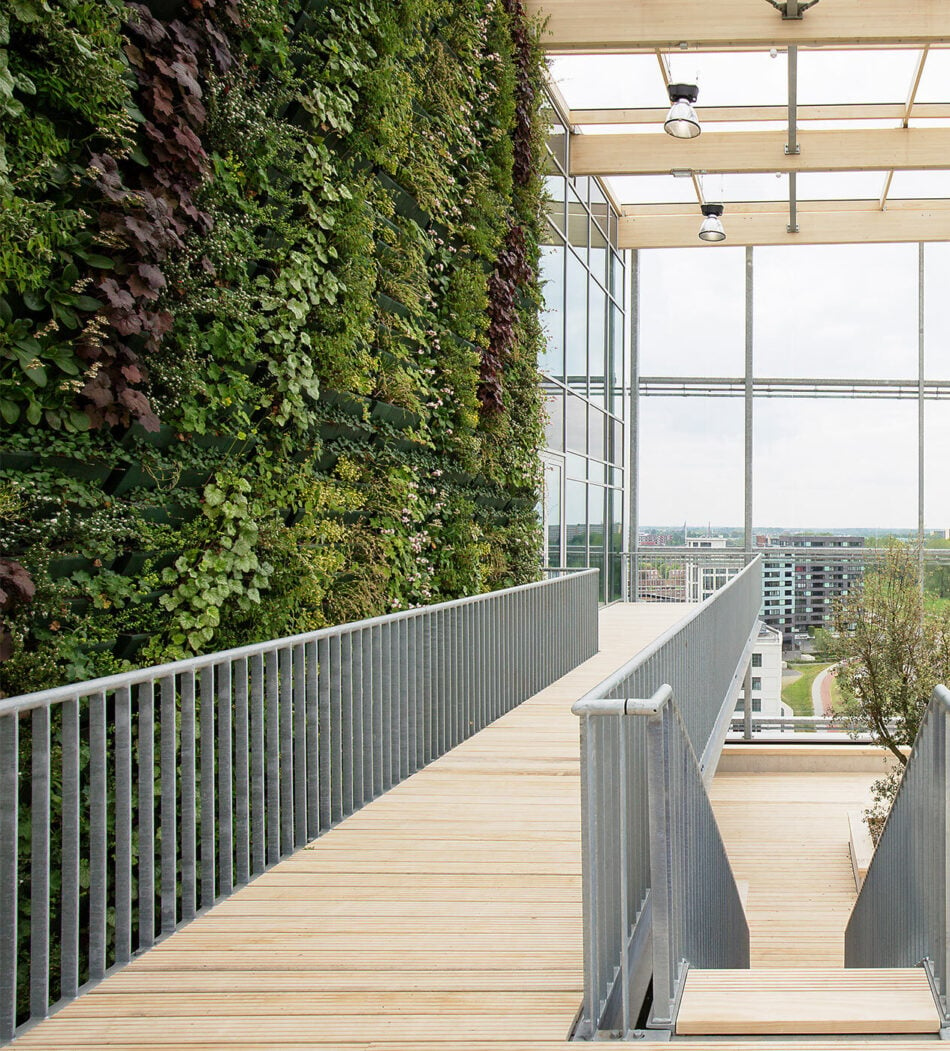
Goodbye 2023 — Architecture Trends 2024

Sustainable Practices
Through technological advancements, the rise in wood design allows for taller and more complex wood buildings. Naturally sustainable wood is a renewable resource and offers warmth and beauty. Today, sustainable building design is non-negotiable, according to Gensler Design Forecast 2024. Public awareness of climate change and other environmental impacts means architects and designers will continue to prioritize sustainability. In this article from 2021, we feature a dozen examples of sustainable building design, including our first passive house design in the U.S.
- Way ahead of the architecture trends in 2024, a home built in 2017, Squirrel Hill’s first passive house is clad with Accoya. Its owners, two physicists, evaluated materials for their embodied energy, toxicity, and low environmental impacts and chose Accoya wood was specified for the cladding due to its low carbon footprint, durability, and outstanding warranty.


Adapting to Change
As our work and lifestyles continue to evolve post-pandemic, designing spaces that can adapt to the changing needs of the work — and home is essential. From movable walls to adaptable furniture to convertible rooms that serve multiple purposes, an emphasis on design flexibility in architecture trends 2024 is key. One of our favorite projects from 2023 takes the concept of flexibility and adaptation to reality.
- The Third Space Commons is a building that has gone through three transformations. The first was showcasing reusable materials and systems from a single-family home. The second transformation is a near-zero energy and carbon home featured in the Solar Decathlon competition, and today — in its third transformation — is a living lab and collaborative space for the University of British Columbia students and faculty focusing on innovation and sustainability. The project uses Accoya Color Grey as its cladding and decking—a testament to evolution and adaptation to change.


Growing Demand for Well-being
As awareness of mental health issues grows, the demand for incorporating well-being into architectural design will continue to be a significant trend in 2024. Research has shown that biophilic design — connecting people with nature within the built environment — can strengthen the immune system, reduce stress levels, improve mood, and boost cognitive function. These are all great benefits for an employee’s productivity and morale at the office.
Integrating nature into buildings through natural light, ventilation, greenery, and natural organic materials like wood will be an architectural trend for 2024.
- This Marion, Iowa fire station is clad with charred Accoya wood and was featured in Architectural Record in March of 2023, and OPN Architects created a sustainable building design. An example of a building focused on biophilic design — connecting nature with building occupants to “ease the physical and mental trauma that they [we] experience in these jobs.” Charred wood is created by using the Japanese technique of Shou sugi ban.

Technological Advancements
In 2024, architectural trends promise to be a year full of exciting, cutting-edge technological advancements. AI continues to make headlines, and it is rapidly changing. AI-powered generative design tools will allow architects to explore possibilities never considered, like predictive modeling, to determine how a building will perform. Acronyms delight — VR, AR, 3D —in allowing architects to go virtual, improving communication and collaboration between the design group, clients, and stakeholders.
Advanced materials and construction techniques are revolutionizing the construction industry, and 3D printing and bio-based materials are gaining more traction than ever due to their eco-friendly nature and as an alternative to traditional building materials.
- When you think of a playground, street signs, lighting, or art sculpture, you might think of metal, concrete, plastic, or glass. Reimagine, if you will, an alternative to the traditional building material: Accoya wood. Accoya is the ideal wood material for extreme climates — outdoor, wet, cold, hot, you name it. It is highly durable. At the forefront are the health and safety of children, durability, and long-lasting, and Accoya delivers.
Lastly, smart buildings and the Internet of Things (IoT) will continue to advance in collecting important data, optimizing building performance, and adapting to the occupants’ needs. Technological advancements are poised to transform architectural design in 2024.

Embracing Cultural Diversity and Inclusivity
Reflecting our diverse world and fostering social equality and connection will be increasingly important in 2024 and beyond. As a result, our architecture must reflect the different cultural traditions and aesthetics within our society to create a better sense of belonging for all. It includes accessible design — physical, cultural, and diverse needs — to ensure everyone can enjoy buildings and designing spaces to promote open interaction and exchanges to understand our differing communities better.
- One of our first projects in the United States (2010) was revitalizing a South Dallas, Texas, neighborhood community center revitalization — a communal hub for a historically underprivileged neighborhood. The Jubilee Park and Community Center catalyzes community renewal and enrichment, revitalizing and educating its children and adults. The center accommodates various needs — police department substation, senior citizen program space, and after-school care for children — while bridging the gap between old and new. Accoya wood blended with the homes in the neighborhood while creating a usable, lasting resource for the community.
While many trends are not new, they are evolving, and many are exploding rapidly — hello technology —it is a pivotal time for sustainable building design and architecture trends 2024 and beyond, paving the way for a more resilient future. At Accoya, we’re at the forefront of sustainable building design.